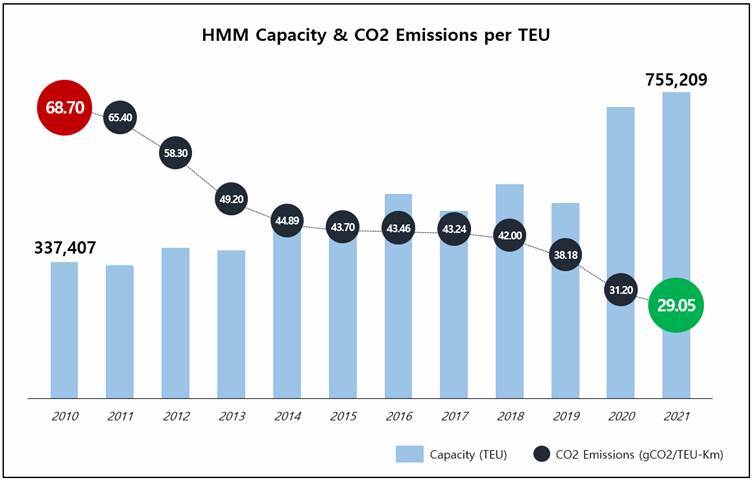HMM, the South Korean flag carrier, reports that its vessels have reduced their carbon emissions by 57.7 percent between 2010 and 2021.
According to an April 12th announcement, HMM says the CO2 emissions generated when transporting one twenty-foot unit container (1 TEU) a distance of 1 kilometer resulted in a decrease “from 68.7g (grams) in 2010 to 29.05g in 2021, representing a reduction of 57.7% over the last decade.”

HMM said this result has been achieved “amid a more than two-fold increase in fleet capacity, from 337,407 TEU to 755,209 TEU, in the same period.”
HMM has made these carbon reductions by taking the following actions:
- Building new energy-efficient mega-vessels.
- Using premium antifouling paint
- Modifying HMM vessels’ bulbous bow shape “to lessen the hull surface's frictional resistance.”
- HMM has improved its operational efficiency by optimizing service routes, speeds, and cargo stowage.
- HMM formed a dedicated Task Force in 2015 for effective energy efficiency management.
- HMM opened a Fleet Control Center in 2020, which analyzes real-time data about vessel operations to reduce greenhouse gas emissions.
IMO
HMM says it is “committed to reaching net-zero carbon emissions across its fleet by 2050. Last February, it signed newbuilding contracts for nine 9,000 TEU methanol-fueled containerships.”

Follow us on social media: